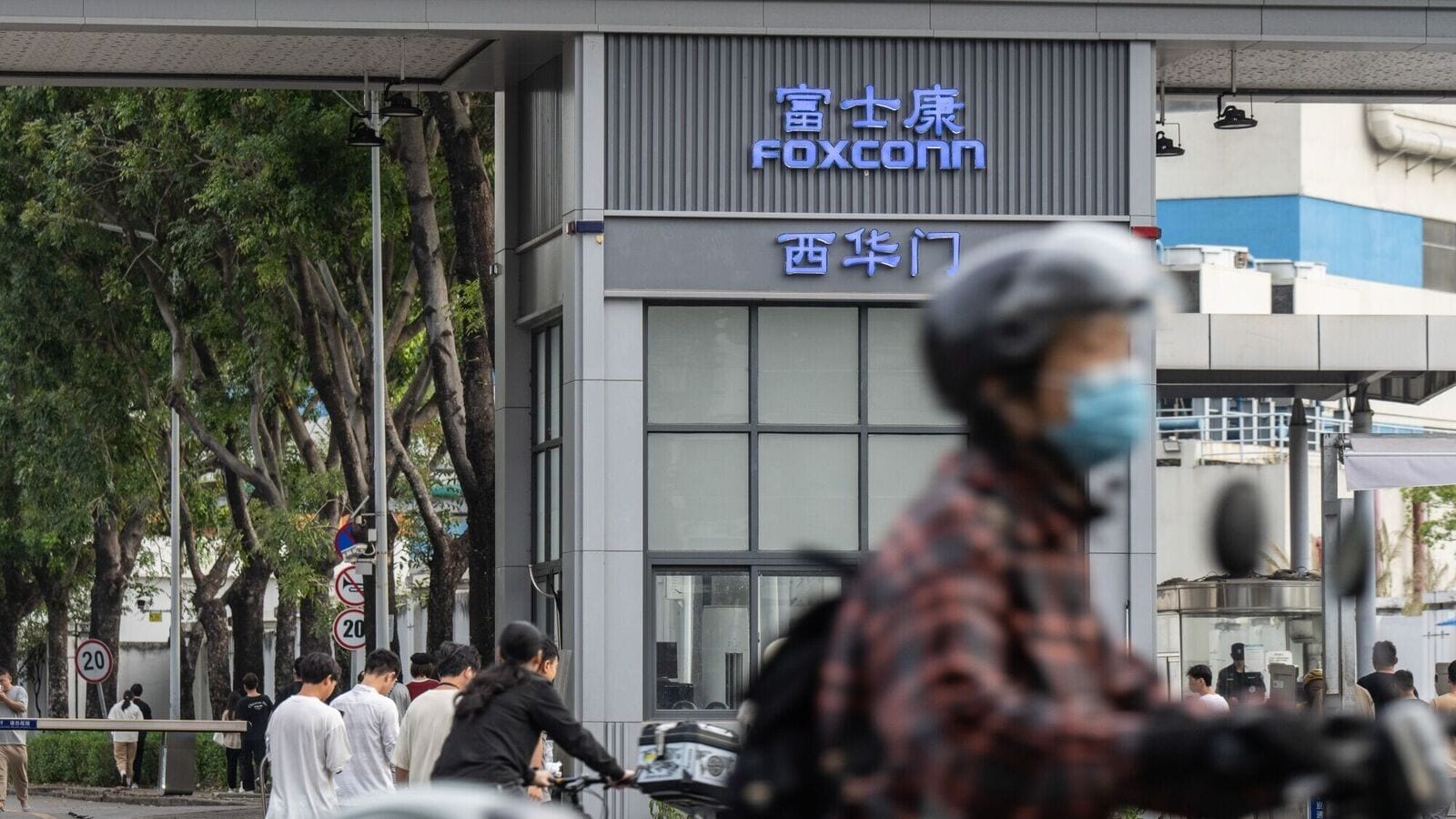
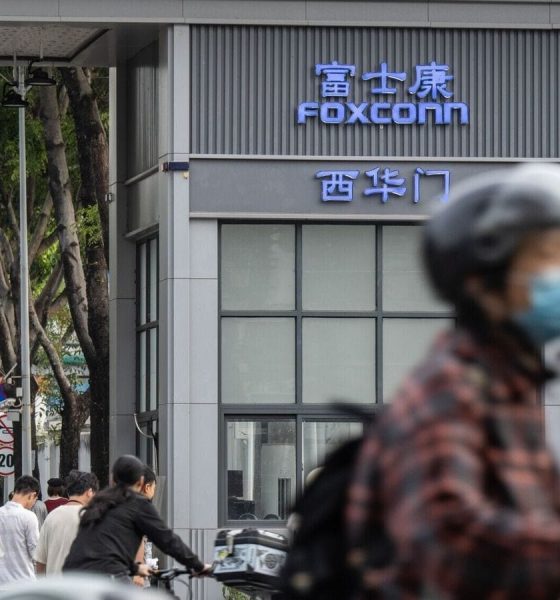
Technology
How China’s Foxconn executive recall could reshape India’s electronics future – Crypto News
Four people that Mint spoke with said that while the withdrawals may not lead to a major disruption of operations for Apple or Bharat Foxconn International Holdings Limited (FIH), at stake is India’s ability to expand its assembly lines without oversight from China-based technology experts, partners and stakeholders. For now, China’s move appears to be restricted largely to Rising Stars Hi tech—a wholly-owned subsidiary of Foxconn’s India unit, Bharat FIH, a senior government official said.
The ‘net’ earnings from India’s electronics industry, commonly referred to as ‘domestic value addition’, refers to the industry’s total contribution to India’s economy—after paying all due royalties to foreign entities supplying the requisite infrastructure. It is this that came under the scanner after Bloomberg reported on 2 July about China urging Taiwan’s Foxconn to strategically recall key executives—thus halting localization of technologies critical to expanding the electronics manufacturing ecosystem in India.
Foxconn has pulled over 100 key Chinese tech leaders, who were deputed to the company’s India operations, in phases over the past six months.
Key Takeaways
- Foxconn’s recall of Chinese tech specialists from India could hinder India’s ability to rapidly increase its net earnings from Apple iPhone manufacturing.
- This move, largely affecting Rising Stars Hi Tech (a Foxconn subsidiary), impacts India’s capacity to expand assembly lines and localize technology without Chinese oversight.
- The ‘net earnings’ or ‘domestic value addition’ (DVA), currently at 16% for iPhones, is crucial for India’s goal of scaling its electronics economy to $500 billion by 2030 and doubling DVA.
- India needs to upskill its engineers and localize specialized machinery/processes to reduce reliance on foreign technical expertise and proprietary interfaces, often in Chinese.
- The withdrawal of key executives could significantly slow down localization efforts and hinder India’s ability to reduce licensing fees paid to foreign entities.
- In the long run, India is implementing incentive schemes for components localization and RDI to build indigenous capabilities and reduce vulnerability to foreign disruptions.
The Centre is not too worried at the moment—underlining that India’s electronics economy should “find a way to chart its own growth path in the long run, and some disruptions are a part of the usual process.”
“Whenever there is a significant geographical shift of an established supply chain—such as that we’re seeing Apple undertake—there is some amount of disruption and adjustments that happen as part of the technology transfer process. The government, as part of the established process under Press Note 3 (of 2020), issues visas to visiting delegations of foreign nations based on their applications. Even as some Chinese nationals are being withdrawn, there are executives from the US, Taiwan and Vietnam who have replaced them. Any impact on the Indian electronics ecosystem is thus likely to be limited, and short-term,” the government official cited earlier added, requesting anonymity.
The Press Note 3 in question was a special-provision move by the Centre made in 2020, restricting foreign investment and executive movements from “nations that share a land border with India”—notably including China, in light of the clash between the two nations in Ladakh’s Galwan Valley.
Source of issue
To be sure, the key point of the current issue stems from Rising Stars Hi Tech, alongside Tata Electronics, being involved significantly in ramping up Apple’s electronics supply chain in India. With US president Donald Trump’s trade pressures, Apple sought to shift its US supply chain from China to India for iPhones. However, this requires India to significantly expand its own assembly line capacities to produce “80-90 million iPhones per year”, said Navkendar Singh, associate vice-president at market research and consultancy firm International Data Corp (IDC) India.
“To execute this expansion phase—without even taking the question of value addition into account, technology specialists from China make for a crucial resource in terms of establishing the local infrastructure, localizing the machineries, and training senior executives within India to retrain other executives to take over. This process is still an ongoing one, and is what will likely be hit in the long run as a result of China’s silent strictures,” Singh said.
The training and domestic value addition factors, however, are of utmost importance for India’s electronics goals. India aims to scale its electronics economy to $500 billion by 2030, from $150 billion currently. By this time, with Apple picking India as an assembly destination of choice, iPhones could single-handedly and directly contribute up to $80 billion to this economy, significantly higher than the current $20-25 billion.
Indirectly, Apple’s impact is significantly higher. The company is the world’s single-largest smartphone maker, and sells at 3x the average selling price of smartphones in most markets. As a result, Apple choosing India as a source of assembly is set to bring more supply chain and components ecosystem vendors to the country—thereby building a circular electronics economy within India in the long run.
It is this localization that would further enhance domestic value-addition, which, as per Tarun Pathak, director and partner at market researcher and consultant Counterpoint India, is at 16% currently. This means that for every iPhone assembled in and shipped from India, 16% of the total manufacturing cost goes towards boosting the country’s gross domestic product (GDP).
By 2030, India hopes to double the domestic value addition, as per Singh, Pathak, and the Centre’s own estimates. Doing so will double the net domestic revenue that is added to India’s GDP from iPhone assembling. However, stalling the arrival of key executives could present a considerable near-term threat to the doubling of local earnings.
Critical for expansion
A senior industry executive familiar with the current movements said, requesting anonymity, that “the involvement of senior technology specialists from China is critical to expand manufacturing supply chains, since India has not upskilled enough engineers at scale to fully replace the need for foreign partners within the electronics engineering firms.”
A second industry executive who works with a rival of Rising Stars Hi Tech in India, requesting anonymity, added that “a lot of specialized machinery that is set up for the first time requires senior executives with technical knowhow from China, since the machine operation interfaces are often proprietary—and also in Chinese.”
“This requires specialized training for Indian tech executives to undertake—and subsequently localize these processes to ensure that the licensing fees paid to foreign entities go down each year. But, without hand-holding right now, the localization process will face a significant slowdown,” the second executive added.
For the long run, the Centre has rolled out a $2.7-billion components localization incentives scheme for vendors to enter India. Last week, a $12-billion research, development and innovation (RDI) scheme under the Department of Science and Technology (DST) also sought to provide critical electronics makers with long-term concessional loans to build their own machinery and other processes.
“Threats such as giving in to China’s pressure of withdrawing technology executives will happen even more frequently, if India does not start ramping-up its licensed technologies and its own patents in the electronics industry. It will also be left open to losing business because of foreign disruptions, and that should be avoided at all costs,” said Ajai Chowdhry, industry veteran, and co-founder of HCL and electronics body Epic Foundation.
-
others1 week ago
Japan CFTC JPY NC Net Positions increased to ¥132.3K from previous ¥130.9K – Crypto News
-

 Technology1 week ago
Technology1 week agoBest 5G phone under ₹10,000 in June 2025: Lava Storm Play, Samsung M06 and more – Crypto News
-

 Cryptocurrency7 days ago
Cryptocurrency7 days agoJio Financial Services Share Price Surges Above ₹325, But Faces Hurdle at ₹347 – Crypto News
-

 Blockchain6 days ago
Blockchain6 days agoWall Street Moves on-Chain Amid Tokenization of US Stocks – Crypto News
-

 Blockchain3 days ago
Blockchain3 days agoBitcoin Consolidation Continues: These Are Two Key Support Levels To Watch – Crypto News
-

 Blockchain3 days ago
Blockchain3 days agoBitcoin Consolidation Continues: These Are Two Key Support Levels To Watch – Crypto News
-

 others1 week ago
others1 week agoWTI price bearish at European opening – Crypto News
-

 Cryptocurrency1 week ago
Cryptocurrency1 week agoKatana mainnet launch nears as pre-deposit closes with $200M in active deposits – Crypto News
-

 Technology4 days ago
Technology4 days agoWho is Daniel Gross? Tech veteran who joins Meta as Zuckerberg deepens AI talent hunt – Crypto News
-

 Cryptocurrency3 days ago
Cryptocurrency3 days agoTrent Share Price Crashes Over 9% After Weak Q1 Forecast, Nuvama Downgrade – Crypto News
-

 Blockchain3 days ago
Blockchain3 days agoBitcoin Consolidation Continues: These Are Two Key Support Levels To Watch – Crypto News
-

 Blockchain3 days ago
Blockchain3 days agoBitcoin Consolidation Continues: These Are Two Key Support Levels To Watch – Crypto News
-

 Blockchain3 days ago
Blockchain3 days agoBitcoin Consolidation Continues: These Are Two Key Support Levels To Watch – Crypto News
-
others1 week ago
US SEC May Slash Crypto ETF Listing Time to Just 75 Days – Crypto News
-

 Technology1 week ago
Technology1 week agoTop 10 vacuum cleaners perfect for monsoon: Best picks for wet floors, muddy footprints and damp dust removal – Crypto News
-
others1 week ago
Charles Hoskinson Says Cardano Needs Executive Voice To Lead Bitcoin DeFi Push – Crypto News
-

 Cryptocurrency1 week ago
Cryptocurrency1 week agoBitcoin rises above $107K as Trump’s fiscal policy comments boost hard assets – Crypto News
-

 Cryptocurrency1 week ago
Cryptocurrency1 week agoBitcoin rises above $107K as Trump’s fiscal policy comments boost hard assets – Crypto News
-

 De-fi1 week ago
De-fi1 week agoDeFi-focused Layer 2 Katana Launches Mainnet With $200 Million in Pre-Deposits – Crypto News
-

 Technology7 days ago
Technology7 days agoElon Musk’s X adds AI to its Community Notes, promises faster fact-checks with a human touch – Crypto News
-

 Cryptocurrency1 week ago
Cryptocurrency1 week agoThe Biggest Games Releasing in July 2025 – Crypto News
-

 others1 week ago
others1 week agoBest-Selling Author Ric Edelman Drastically Changes Crypto Investment Strategy – Here’s His New Stance: Report – Crypto News
-
Technology1 week ago
What Is a Solana Staking ETF and How Does It Work? – Crypto News
-

 Cryptocurrency1 week ago
Cryptocurrency1 week agoMichael Saylor’s Strategy acquires $531M in Bitcoin, boosting holdings near 600,000 BTC – Crypto News
-

 Technology7 days ago
Technology7 days agoTop 10 Lenovo laptops: Best all-rounders for work, gaming, browsing and entertainment – Crypto News
-

 Blockchain7 days ago
Blockchain7 days agoBitcoin Holders Near Pain Point Last Seen In October 2024 – Crypto News
-

 Cryptocurrency7 days ago
Cryptocurrency7 days agoArbitrum jumps 5% on Robinhood news – But THIS can ruin ARB’s breakout – Crypto News
-
Business6 days ago
XRP Price As Grayscale Gets Greenlight for ETF Launch, Including XRP – Crypto News
-
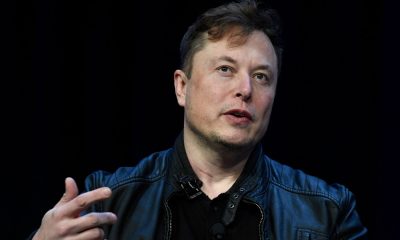
 Technology3 days ago
Technology3 days ago‘Notice the difference’: Elon Musk claims major upgrade to Grok chatbot’s question-answering abilities – Crypto News
-
Business3 days ago
Is Roger Ver the Satoshi Era Bitcoin Whale Behind $8 Billion BTC Transfer? – Crypto News
-

 Cryptocurrency3 days ago
Cryptocurrency3 days agoBinance stacks Ethereum at yearly high, U.S. funds buy more: So why isn’t ETH moving? – Crypto News
-

 Cryptocurrency1 week ago
Cryptocurrency1 week agoXRP price consolidates below $2.20 as whales halt sell-offs, breakout eyes $3.40 – Crypto News
-

 Technology1 week ago
Technology1 week agoVodafone Idea expands 5G services to 23 more cities, including Jaipur, Kolkata and Lucknow – Crypto News
-

 Cryptocurrency1 week ago
Cryptocurrency1 week agoSolana Skyrockets as Bitcoin and Ethereum Grind Higher: Where Do Prices Go Next? – Crypto News
-
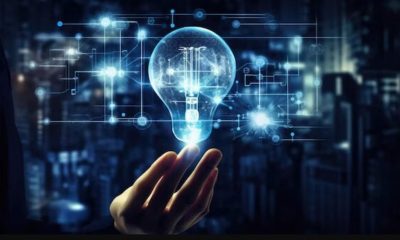
 Technology1 week ago
Technology1 week agoZuckerberg Debuts Meta ‘Superintelligence’ Group, More Hires – Crypto News
-

 Blockchain1 week ago
Blockchain1 week agoTradFi Could Eye Blockchain Due To Banking Frustration – Crypto News
-

 others1 week ago
others1 week agoBitcoin Increasingly Aligns With Store of Value Fundamentals – Crypto News
-
others1 week ago
Crypto Market Shaky as Elon Musk vs Donald Trump 2.0 Begins – Crypto News
-

 others1 week ago
others1 week agoWant to scrutinize how prices move after recent spike in price of rice moderates – Crypto News
-

 De-fi7 days ago
De-fi7 days agoBitcoin Firm BitMine’s Stock Surges Almost 700% on ETH Treasury Plan – Crypto News
-
Business7 days ago
XRP Mid-Year Recap 2025: Major Events Until June and Upcoming Developments – Crypto News
-
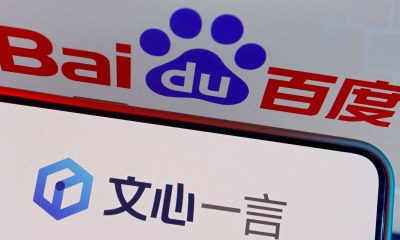
 Metaverse7 days ago
Metaverse7 days agoBaidu responds to Sora and other rivals with MuseSteamer and AI-enhanced search features – Crypto News
-

 Metaverse7 days ago
Metaverse7 days agoBaidu responds to Sora and other rivals with MuseSteamer and AI-enhanced search features – Crypto News
-
Business6 days ago
Why Is Crypto Market Up Today? – Crypto News
-
Technology5 days ago
Turkey Bans Binance Chain DEX PancakeSwap Over Licensing Concerns – Crypto News
-

 others1 week ago
others1 week agoGold tanks as China deal and Mideast diplomacy spark market euphoria – Crypto News
-

 Blockchain1 week ago
Blockchain1 week agoEthereum Sees $269M In Net Inflows In 24H – Bullish Momentum Accelerates – Crypto News
-
Technology1 week ago
Bitcoin Exchange Balances Hit 6-Year Low, Sparks Supply Shock Expectations – Crypto News
-

 others1 week ago
others1 week agoCrypto Strategist Unveils Bitcoin Path to New All-Time High Next Month, Says Plenty of Liquidity To Trigger Run for Altcoins – Crypto News
-

 Cryptocurrency1 week ago
Cryptocurrency1 week agoBitcoin miners suffer at 12-year low – But why aren’t they selling? – Crypto News










